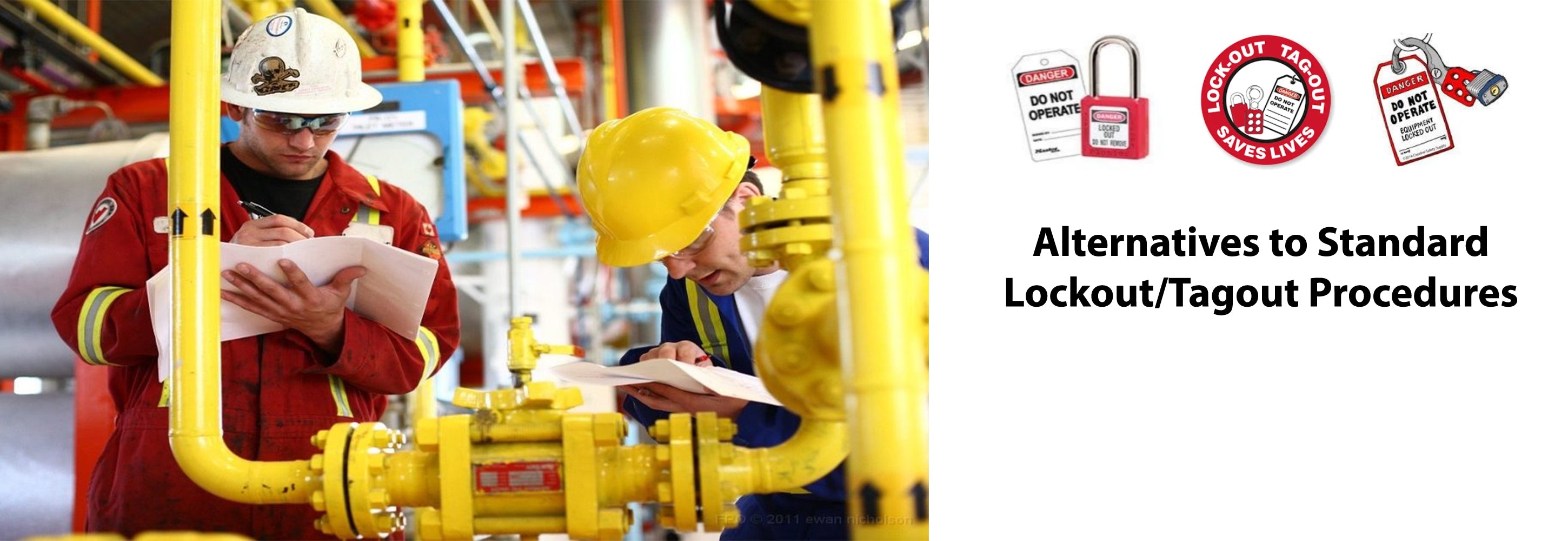
What are Lockout/Tagout Procedures?
Lockout/tagout is critical because it keeps employees safe when equipment is being repaired or maintained. Going through the lockout/tagout process on serviceable equipment many times a day, on the other hand, can quickly eat into your team's productivity and, as a result, earnings.
However, you must remain compliant while also ensuring the safety of your employees whenever a machine fails.
Lockout/Tagout procedures are safety protocols used in industrial settings to ensure that machinery or equipment is properly shut off and unable to be started up again while maintenance or repairs are being performed. These procedures involve the use of locks and tags to physically isolate the equipment from its power source.
So, what can you do?
Why are Alternatives Needed?
While procedures are effective in preventing accidental startup of machinery, they can also be time-consuming and inconvenient. In some cases, alternative methods may be more practical or suitable for certain situations.
1. Machine-Specific Procedures
One alternative to standard procedures is the use of machine-specific procedures. This involves developing customized protocols for each piece of equipment, taking into account its unique characteristics and potential hazards. By tailoring the procedures to the specific machine, workers can save time and effort while still ensuring their safety.
2. Control Reliable Systems
Control reliable systems are another alternative to traditional procedures. These systems use advanced technology to monitor the status of the equipment and prevent accidental startup. They rely on redundant safety measures, such as multiple sensors and fail-safe mechanisms, to ensure that the equipment remains in a safe state during maintenance or repair work.
3. Interlock Devices
Interlock devices are mechanical or electrical devices that prevent the operation of equipment when certain conditions are not met. These devices can be used as an alternative to procedures by automatically disabling the equipment when a specific action is taken, such as opening a door or removing a key. Interlock devices provide an additional layer of safety by physically preventing the equipment from being started up.
4. Virtual Lockout/Tagout
Virtual lockout/tagout is a newer technology that allows workers to control and monitor equipment remotely. This alternative eliminates the need for physical locks and tags by using software and communication systems to disable the equipment. Virtual lockout/tagout systems can provide real-time feedback and alerts, making them more efficient and convenient for maintenance and repair work.
Conclusion
While standard lockout/tagout procedures are effective in ensuring worker safety during maintenance or repair work, there are alternative methods that can be considered. Machine-specific procedures, control reliable systems, interlock devices, and virtual lockout/tagout systems offer different approaches to achieving the same goal of preventing accidental startup. By exploring these alternatives, companies can find the best solution for their specific needs while maintaining a high level of safety.
Alternative lockout/tagout methods, when adopted and handled appropriately, can be an efficient and effective approach to save downtime while keeping your staff safe when servicing equipment.
We can assist you if you want to learn more about lockout/tagout or need assistance implementing lockout/tagout policies at your business.
Contact us today to find out how we can help you enhance your lockout/tagout procedure and maintain your organization in compliance with requirements.
